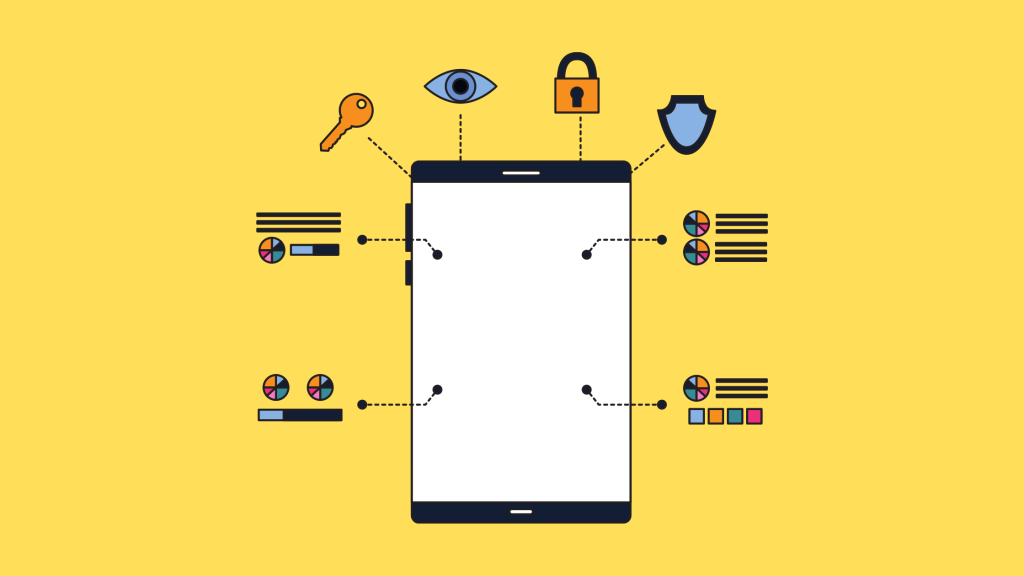Cyber security trends move and alter at a breakneck pace. By the time you may be catching up with the latest cyber security news, those trends can change. Because of this, organizations may struggle to stay protected against some of the latest cyber threats and technologies. The everchanging threat landscape may seem scary and hard to stay on top off. But that’s what we’re here for. Cyber security trends have continued to evolve over the last year. However, many of these cyber threat trends aren’t necessarily new, they’re just growing! Lets take a look at some of the latest cyber security threat trends and how an organization can stay protected against them.
The Trends:

Threat Trend #1: Staying Home
COVID-19 changed the way business is conducted forever. In early 2020 organizations were left scrambling to implement solutions allowing their employees to conduct work remotely. Typically when scrambling occurs, things get put in place fast. And on occasion, when things get done really fast, some corners are cut. A lot of times that means that security may not be at the forefront of everyone’s mind. Attackers know this and often try to exploit that.
It was no different throughout 2020 and so far in 2021 as well. It’s not looking good for 2022 either. Prior to the pandemic, only about 5% of Americans had been working from home. That number skyrocketed to 60% after the pandemic began. Now many organizations are not going back into the office or are adopting hybrid models. Along with this, comes many great cyber security challenges.
The lines between work life and personal life are more blurred than ever and along with this many additional risks are introduced. The list is long, but lets just take a look at a few:
- The use of BYOD/Personal devices to conduct business
- An increase in social engineering attacks, such as phishing, smishing, and vishing
- Unsecure Wi-Fi networks
- Family members using work devices
- Misconfigured or lack of VPN solutions
- Lack of perimeter security, such as a firewall.
The list continues, but you get the point. It’s a scary list and attackers will continuously try to exploit these vulnerabilities, but your organization can take the steps to stay protected.
Defend the Trend
In security it is always better to be proactive than reactive. As these remote working threats continue to present themselves, let’s take a look at ways to stay protected.
- Require VPNs to conduct work remotely. Ensure the VPN solution is properly configured.
- Enforce strong passwords and multi-factor authentication.
- Keep devices and browsers up to date with all of the latest security patches. Zero-days should be patched as soon as possible.
- Run an up-to-date anti-virus solution on workstations
- Educate end-users on identifying the common social engineering attacks, such as phishing
- Enforce policies for remote work, such as an Acceptable Use Policy and Information Transfer Policy
- Deploy a Mobile Device Management system (MDM)

Threat Trend #2: Ransomware Continues to Rise
It wouldn’t be a cyber security trends article if ransomware wasn’t on the list. I bet you can’t find one of these articles where it’s not mentioned! The truth is, if you look back at the last five years ransomware is always listed. However, right now ransomware deployments are on the rise. These attacks continue to become more sophisticated with time. The increase in newsworthy ransomware incidents can be attributed to this.
Ransomware is becoming a favorite of attackers. It is easy to see why. It works! Organizations are now more willing to pay the ransom to recover their systems and data. From the attackers perspective, continuing to do what works only makes sense. If it ain’t broke, don’t fix it. In fact, they are actually improving their techniques and adding additional flair. Often, ransomware is deployed only after sensitive data has been exfiltrated from the organization under attack. A parting gift of sorts, more bang for the cyber criminals buck… so to speak.
It’s all to common these days reading about waves of successful ransomware attacks in the news. Gone are the days where it was a handful a year. Now it is a handful a week. Ransomware is one of the great cyber risks facing an organization and it’s a cyber security trend that’s here to stay.
Defend the Trend
Ransomware is a scary word for many, and rightfully so. However, you can harden your environment by deploying practices such as:
- Keep devices and browsers up to date with all of the latest security patches. Stay on top of vulnerability and patch management.
- Run an up-to-date anti-virus solution in your environment.
- Deploy, test, and verify effective backup strategies. Securely store these backups.
- Think “3,2,1” – 3 copies of your data, 2 types of backup media, 1 stored off-site
- Educate end-users on the cyber security risks that exist and ways to identify and avoid them.
- Use the principal of least privilege in your environment.
- Deploy and configure firewalls to restrict traffic to only necessary ports
- Deploy logical network segmentation within your network
- Conduct regular vulnerability scans of your environment
The threat of ransomware continues to grow. Regardless of an organization’s size, the threat of ransomware will always exist. It is a cyber security trend that has boomed over the last few years and is going to be a trend for the foreseeable future.

Threat Trend #3: The Chain (Also a great song)
Another cyber security trend that continues to rear its ugly head is supply chain attacks. In 2021, there was a 650% increase in these types of attacks. For those that aren’t familiar with this, a supply chain attack is when attackers are able to compromise an organization through a third-party supplier or service.
One of the first and most famous examples of this would be Stuxnet. Another major newsworthy example was the massive Target breach that impacted millions of consumers personal information. How was Target compromised? A third-party refrigeration company with access to Target’s network was compromised. Essentially attackers go after the small fish to get to the big fish.
Late 2020 and 2021 has seen supply chain attacks make major headlines beginning with the SolarWinds attack in December 2020. This attack alone impacted 18,000 of their customers. It didn’t stop there as other supply chain attacks made headlines shortly after as well.
Another IT company, Accellion, was also used as a springboard for a supply-chain attack on their customers utilizing a legacy solution. Of their 300 customers still using this legacy solution, 100 were impacted by this attack.
Lets keep on going. Kaseya VSA is an IT management tool utilized by thousands of organizations worldwide. Like in the other examples, this product became compromise and used as an entry-point into over 1,500 organizations. Once within these organizations, attackers deployed ransomware
Like ransomware, supply-chain attacks are not new. However, over the past few years the rate in which these attacks occur have increased astronomically. While these attacks can be hard for your organization to prevent, there are still proactive measures that can be taken.
Defend the Trend
As mentioned above, these attacks sometimes seem beyond our control. However, organizations can still properly manage this supply chain attack risks.
To help protect against these organizations can:
- Include cybersecurity requirements in third-party contracts and supplier agreements. If all parties are following security best practices, that helps lower the risk. This includes conducting supplier risk assessments and continuously monitoring these services.
- Deploy a defense in depth strategy. This adds multiple security layers to an organizations security posture.
- Use the principal of least privilege in your environment and utilize Privileged Identity Management.
- Appropriately inventory all of your software and third-party services. You can’t protect what you don’t know is out there.
- Limit the types and amount of data that third-parties have access too.
- Ensure that you have a strategy in the event that you become a victim of a successful attack.
While these may be some of the more difficult attacks to prevent, it doesn’t mean organizations can’t minimize their threat landscape.

Threat Trend #4: Cloud Threats Continue
You may be catching on by now that a lot of these cyber security trends can be the same as they were in years past. The cloud boom was growing years ago and it continues to do so. In today’s world of working from anywhere the number of cloud solutions utilized by companies is at an all time high. Solutions are constantly developed to meet the expanding needs of organizations, especially with the expanded remote workforce.
These solutions utilized by organizations are also some of their higher risk assets. They often lack strong security controls and contain valuable data for an organization, leaving them vulnerable. Often times, the out-of-the-box configurations of these solutions focus more on accessibility than security.
Attackers continue to target these cloud solutions, especially user credentials for SaaS services and webmail apps. These types of cloud solutions often contain valuable data that attackers can use for their own financial gain. Failure to properly protect these solutions, many times, come back to bite organizations.
Fear not however, security help is on the way.
Defend the Trend
The need to protect cloud environments only continues to grow in importance with each passing year. Even small organizations that utilize cloud solutions are vulnerable to the many threats that are out there.
How can your organization stay protected from these latest threats? Let’s take a look:
- Utilize strong authentication methods for cloud solutions. Enforce the use of strong passwords for these solutions with multi-factor authentication enabled. Additionally, ensure proper access control best practices are followed.
- Properly review all cloud solutions before selecting a vendor. Review the security features of each before determining which solution to use. Contracts with these vendors should be reviewed at a regular frequency. With cloud solutions, security is a shared responsibility.
- Limit the amount of data that you store in the cloud. If storing sensitive information in the cloud, ensure additional security controls are applied.
- Ensure that there are retention and deletion policies configured for cloud services.
- Train your end-users on the threats targeting cloud solutions. This includes social engineering tactics like phishing, smishing, and vishing.
Cloud environments are another potential entry point for attackers to access your data. Like the other cyber security trends listed so far, the threats in this space only continue to grow.

Threat Trend #5: Mobile Device Mayhem
“I clicked on this link on my mobile device and not a computer so everything is okay right?” That’s a question I’ve heard numerous times in the past. Well the answer to that is “Uhm, no”.
There have been many security ramifications of remote workforces as discussed earlier. Another one of those is the increase in cyber attacks targeting mobile devices. Attackers are opportunistic and this situation is no different. Like the others, this is another cyber security trend that has continued to increase over the last few years.
The fact that attackers continue to target these devices shows that they are successful. Take a look at the Pegasus spyware just to see how effective it is. The numbers are eye opening when you look at them. So far this year, there has been a 700% increase in smishing attacks. Yes, you read that right. 700%!!!! That is a terrifying number to see. Couple that with some zero-day vulnerabilities and you have a mobile device disaster in the making.
No one likes disasters, fortunately in this case as the others, organizations can take appropriate steps to protect themselves from this expanding threat landscape.
Defend the Trend
While in this section we are talking mobile devices, you will notices many of the same similarities when it comes to mobile device security best practices:
- Keep operating systems of mobile devices up to date. As these devices continue to be targeted and more zero-day vulnerabilities are discovered, this becomes more and more critical.
- Deploy a Mobile Device Management (MDM) platform to more centrally control the security of mobile devices. These will assist with monitoring devices, while providing security response in the event of a lost or compromised device.
- Enforce password/pins/biometrics to access mobile devices. As more mobile devices are used to conduct business and contain apps with company data, protecting these devices with ones of these methods is paramount.
- Develop and enforce a Mobile Device Policy within your organization.
- Avoid connecting mobile devices to free and open, unsecure Wi-Fi.
- Only download applications from trusted sources, like the Apple and Android app stores.
- Train end-users on how to securely conduct business on these devices and avoid the common attack vectors like phishing, smishing, and vishing.

Closing Thoughts
If you keep on top of these cyber security trend articles over the years, you will notice many of the same trends appearing. In my opinion, this means that attackers are winning the cyber security battle and we are still playing catch up on many fronts. Along those same lines, how many consistencies did you see in the defensive measures for each cyber security trend? It speaks volumes how deploying these measure can reduce risk across numerous landscapes.
Take one final look at these attack trends. How many of them are applicable to you and your organization? Do you know where your vulnerabilities lie that can be exploited by these trends?
If not, we can figure out together. Contact us to see how we can help you!

